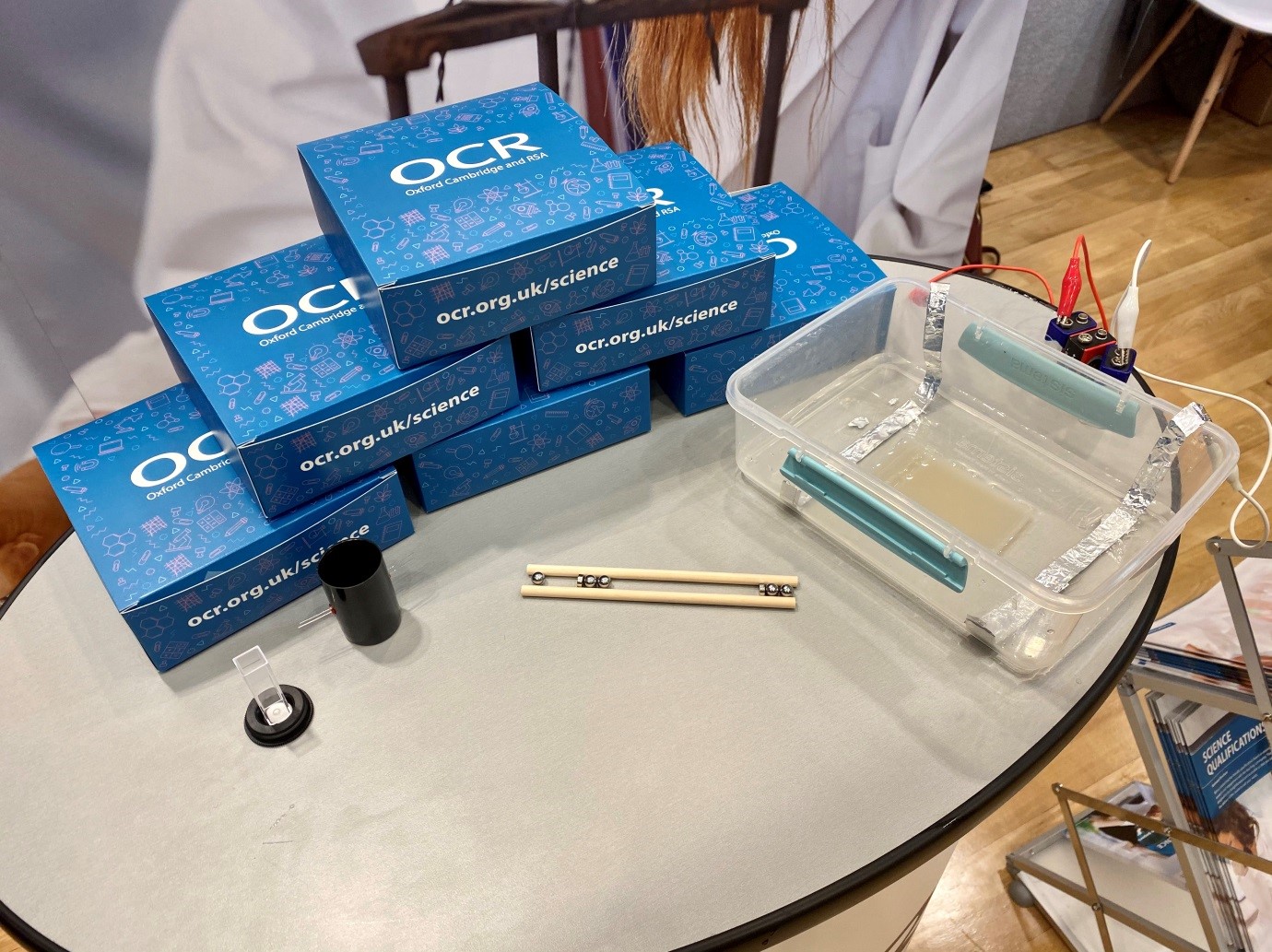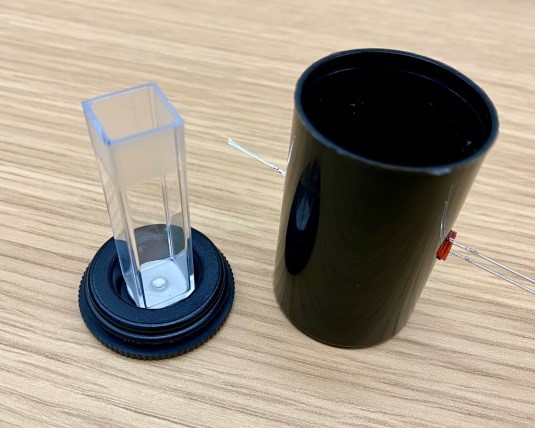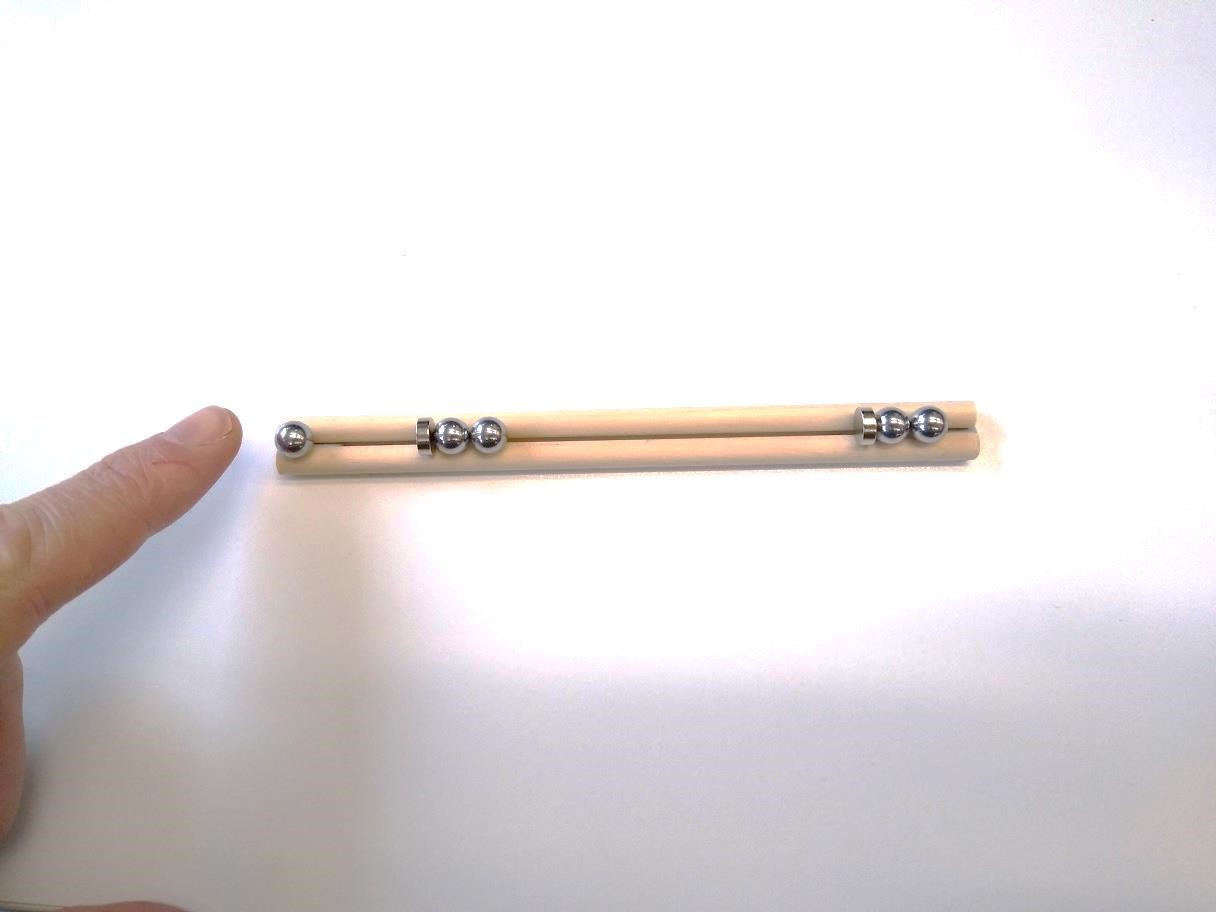Box of bits: small, low cost practical science kits to demonstrate and investigate concepts
09 September 2020
Andy Brunning, Chemistry A Level Subject Advisor

Every January we attend the Association for Science Education (ASE) National Conference, and for the past few years we’ve been giving away a ‘box of bits’ to teachers attending. These are small practical kits which help to illustrate concepts in GCSE and A Level Science, and we hope will be useful during your lessons.
This year, our aim was to make simple, low-cost versions of practicals which otherwise need expensive equipment. We made the following ‘box of bits’ kits:
- Biology – Gel electrophoresis
- Chemistry – Film canister colorimeter
- Physics – Magnetic linear accelerator
Activities, ideas and topics
The instructions for these activities are available on our qualification pages so that you can use them in your teaching. Below we’ve given you some ideas on topics they link to and what you could do with them.
Biology: Gel electrophoresis
Download this resource

Gel electrophoresis enables separation and identification of DNA fragments and proteins. It’s rarely carried out in schools due to the high cost of the equipment.
Our model allows students to develop knowledge and understanding of the technique by using household equipment to separate food colourings. This activity offers opportunities to discuss its applications, such as paternity tests or forensics, or the model’s links to gene inheritance.
At A Level, it could be used to assess student competency in the principles of gel electrophoresis. It can also be adapted to use biological compounds, such as DNA fragments or proteins.
Chemistry: Film canister colorimeter
Download this resource

You can make a functional colorimeter using just a film canister, cuvette, two LEDs and some other circuitry. The canister has holes drilled in the side for the LEDs and a cuvette fixed to its lid. The LEDs act as both light source and detector, producing millivolt readings on a voltmeter that relate to absorption.
Colorimetry is in the A Level specifications, though is not in GCSE. It’s a useful demonstration of determination of solution concentrations, and has links to monitoring reactions to determine reaction rate.
While the results are not of a very high quality, it’s still possible to see a clear difference between solutions of different concentrations. An alternative is this Lego colorimeter from CLEAPSS, or an approach using a photoresistor in place of one of the LEDs.
Physics: Magnetic linear accelerator
Download this resource

The magnetic linear accelerator uses ball bearings and cylindrical neodymium magnets. The magnets and bearings are set up as shown above. Rolling the leftmost bearing towards the first magnet launches the rightmost bearing at high velocity.
This activity links to the conservation of energy, the conservation of momentum, and the properties of magnets. Varying the number and strength of the magnets impacts on the final velocity of the bearing the accelerator launches. A longer track with more magnet stages will also increase the ball’s velocity. The magnets can shatter at high ball velocities, so we don’t recommend rods over 300 mm in length.
In summary
We hope that these activities illustrate that you don’t always need to spend a lot on practical equipment to be able to demonstrate complex concepts. Do you have an idea for a future ‘box of bits’ activity? Let us know in the comments below!
Stay connected
If you have any questions email our subject advisors at science@ocr.org.uk. If you’re considering teaching OCR Science sign up for updates or follow us on Twitter @OCR_Science.
About the author
Andy joined OCR in September 2017 as the Subject Advisor for A Level Chemistry. Before joining OCR he worked as a chemistry teacher in Bournemouth and Cambridge, and is particularly interested in context-based teaching approaches. In his spare time he enjoys photography, graphic design, and playing the guitar.
Related links